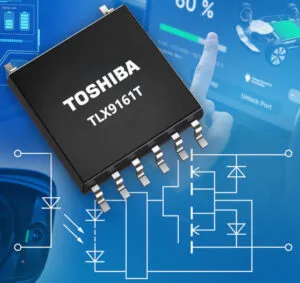TLX9161T is aimed at electric vehicle batteries, and turns on or off in a maximum of 1ms.
Its characteristics are tuned for “modern automotive battery and fuel-cell control and battery management systems, which monitor voltage and detect mechanical relay sticking and ground faults”, said Toshiba, claiming: “These photorelays are also ideal for replacing traditional mechanical relays.”
Inside in an infra-red LED, optically coupled to a photovoltaic generator and a pair of back-to-back mosfets – allowing the device to switch ac loads. Isolation between input and output is 5kVrms.
10mA drive is used for most of the device’s specifications, with additional figures at 6 and the abs max of 30mA.
On-resistance is 800Ω (max across temperature, 6mA drive), the output can handle up to 30mA, and the output pair leaks less than 100nA when off (~1μA typ at 125°C).
Intended to block 1kVac as well as 1.5kVdc, the device is packaged in a 7.76 x 10 x 2.45mm SO12L-T, whose resin has a CTI (comparative tracking index) exceeding 600 (IEC60664-1 material group I), and achieves creepage and clearance distances of 8mm “confirming isolation operating from -40 to +125°C, making it fully compliant with AEC-Q101 Grade 1”, the company said.
“By reducing the size of the built-in mosfet chip, Toshiba has enabled the new photorelay to be housed in a SO12L-T package, which is approximately 25% smaller than the SO16L-T package used for its predecessor, the TLX9160T. Despite the smaller package, the TLX9161T maintains the same pin pitch and pin layout as the SO16L-T, allowing for common use of circuit board pattern designs.”
Find the TLX9161T photorelay on this Toshiba web page
Last month, the same company launched a 1.8kV photo-relay in a SO16 package

